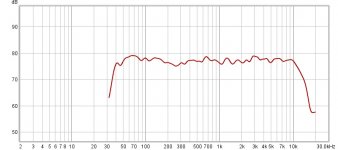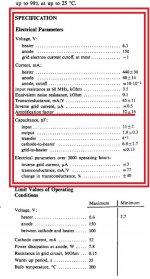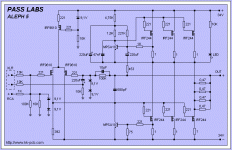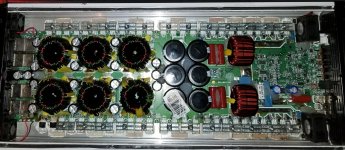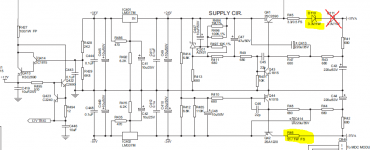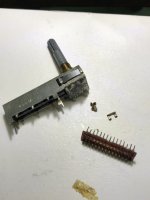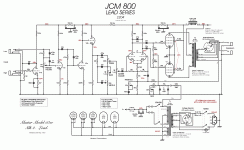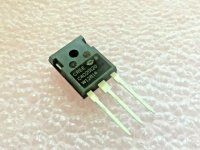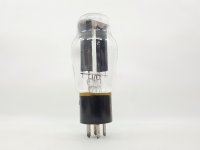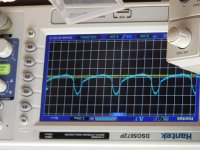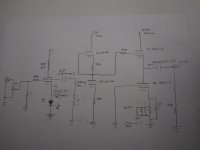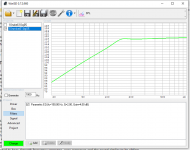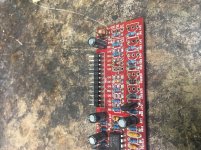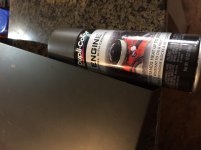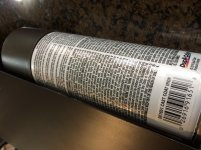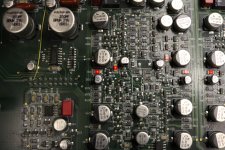Hi All,
I needed a spice model for EL86 tube (triode mode). there are several models on the web but all of them use the simulation method based on some kind of formula. I wanted the model which is derived directly from the datasheet. Since I could not find one, I made it. I use LTSpiceIV and the model might be the program specific, but the methodology is very general and can be used for creating spice models for any triode and simulation programs.
I will describe the process of creating the model step by step.
1. The model is shown in the attached file. In nutshell, the triode is modeled as a voltage controlled current source. The output current is evaluated based on Vgk, Vpk and triode plate characteristics. Plate characteristics are loaded in the model as the points and the spice program does the interpolation. None of the tube constants (u, gm or Rp) are used. The model is simple and can be easily modified for other tubes.
Here are the essential elements of the model with comments and explanations:
a) Connections are Plate (P), Grid (G) and Cathode (K).
b) Dummy voltage source E1 is used to generate the voltage equivalent of V(p,k). E1 is used as an input voltage for the current sources (see below).
E1 n001 0 value {V(P,K)}
c) Dummy voltage dependent current sources (G0 - G12) are used to generate currents representing each I(Vgk=constant) plate curve. There are as many current sources as the curves in the tube plate characteristics. In the EL86 datasheet there are 13 curves (Vgk=0, Vgk=-2.5 .... Vgk=-30). The data comes directly from the plate curves. The curves are the plate current I(mA) vs plate to cathode voltage Va(V) at different grid voltages Vgk (V). The input voltage for each GX current source is E1
Here is the example of the current source for vgk=-5V:
G2 n102 0 n001 0 table (0 0
+ 38.652482 0.000709
+ 41.331757 0.001694
+ 44.011032 0.002561
......
+ 168.794326 0.200355 )
d) Current dependent current source GPK is used to generate output plate current. Current source interpolates current based on the lookup table.
GPK P K value={Table (V(g,k),-40,0,-30,I(G12),-27.5,I(G11),-25,I(G10),-22.5,I(G9),-20,I(G8),-17.5,I(G7),-15,I(G6),-12.5,I(G5),-10,I(G4),
+-7.5,I(G3),-5,I(G2),-2.5,I(G1),0,I(G0))}
e) I(Vp, Vgk=0) curve is used for all positive Vgk voltages. This assumption is not true for the real triode. However, it is quite useful for simulation of the receiving type tubes which should be operated with Vgk<0. In the simulation, plate current saturates when Vgk>0 and waveform is intentionally distorted. You can remove or modify this condition easily to alter tube behavior in the positive Vgk region.
f) Cutoff grid voltage is defined somewhat arbitrarily as an interpolation of the Ip(Vpk) points to Ip=0 at maximum Vpk (in this case Vpk=300V). For EL86 this happens approximately at Vgk=-40V.
Now what's left is to fill the model with the data derived from the plate curves.
2. I obtained the electronic image of the plate curves from the datasheet. My digitizer program (see below) takes jpg, tif and png but does not take pdf files as an input. So, there is an extra step of converting pdf to jpg file.
3. I used GetData graph digitizer from here
Digitize graphs and plots - GetData Graph Digitizer - graph digitizing software. You can use any other program, but I like GetData for its simplicity. I imported jpg file to the program and semi-manually digitized all curves. It took me about an hour to get everything right. Digitizer outputs the data in several tabulated formats. I used Excel format for data output file.
4. The last step was to open file in Excel and copy-paste the appropriate data columns in my model text file. To edit the model file I used LTSpiceIV text editor, but notepad works as well.
Comments and ideas are welcome
🙂